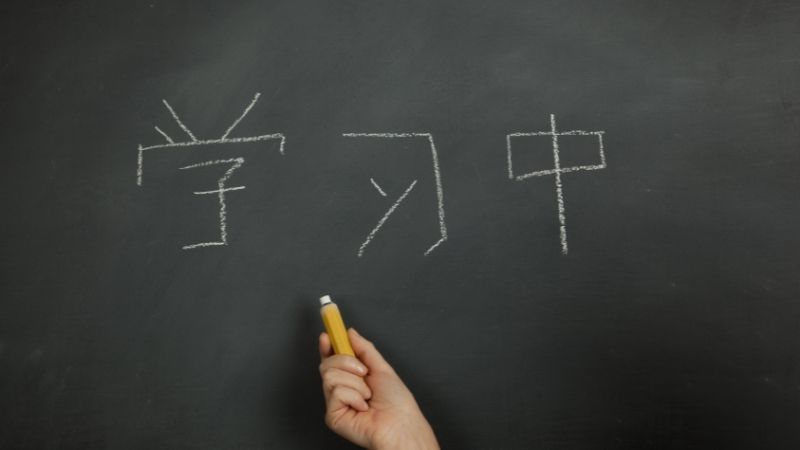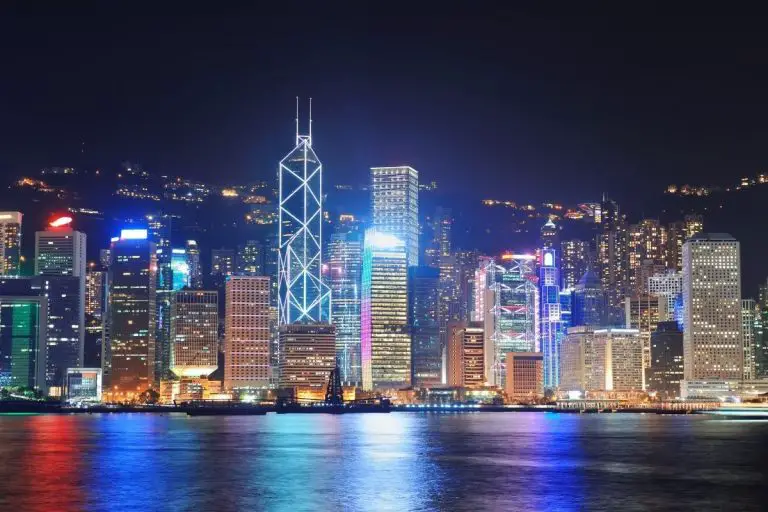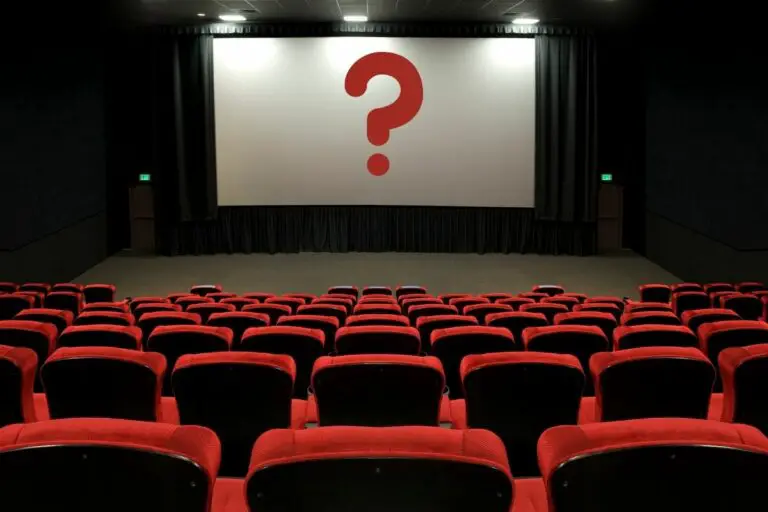The 4 Main Differences Between Mandarin and Chinese
In general, with all know that Mandarin is a common language in China, but is it the main language? A dialect? Or just the specific term for Chinese? The clear delineation is blurry for most foreigners, and that’s why I’m writing this article, to make everything clear once and for all.
As a whole, Chinese is a generic term used by foreigners to designate the language used by the Chinese people. But in fact, China has about 4 different main languages, including Mandarin, Min, Wu and Yue.
Keep reading if you want to learn more about the languages spoken in China and their differences.
Mandarin vs Chinese Classification
One of the most interesting things about Mandarin and Chinese is that they are both considered the same language, but by different people.
“Chinese,” is a generic term used by foreigners, like me, to designate the language used by the Chinese people. However, this is an “umbrella” term, meaning that the word “Chinese,” simply encompasses all of the dialects and languages actually used in China into one term.
It’s a good way to organize all of these languages that are used in a single country, but that’s not specific at all.
It’s a little different in China, as China has about 4 different main languages used within: Mandarin, Min, Wu (ex. Shanghainese), and Yue (ex. Cantonese), all of which the Chinese people and native speakers simply consider as variants of the same language instead of their own distinct languages.

So, in a way, foreigners and the native peoples in China agree that there is one language in China, it’s just that foreigners are using an umbrella term to cover everything while the native speakers are a little more specific. The natives consider China to only have one language, but in classification the dialects are considered different.
Mandarin is one of the major languages spoken in China, and is classified by linguists as the standard national language of China because it is spoken by the majority of the residents in the country.
This language is also classified as the national language by the Chinese, but they call a certain kind of Mandarin as the “Standard Chinese,” known by the people as “Putonghua,” which is a variant of the Beijing Mandarin dialect.
Regions Speaking Mandarin vs Chinese
Since “Chinese” encompasses every one of the 13 spoken languages in the country of China, wherever Mandarin is spoken, so is “Chinese,” both in the sense that foreigners like me know it, and in the sense that the native speakers in China know it.
Mandarin is classified as being spoken by an impressive 71% of the population in China. Counting “standard Chinese,” t’s spoken primarily in the northern and southwestern parts of China in the following regions:
- Xinjiang
- Gansu
- Shaanxi
- Sichuan
- Yunnan
- Hubei
- Henan
- Shandong
- Hebel
- Jiangsu
- Anhui
- Beijing
- Liaoning
- Jilin
- Heilongjiang
And in Parts of:

It’s easy to see why Mandarin and its variants are considered the standard language of China.
The rest of the 13 languages spoken in China are naturally spoken throughout the rest of China. The Southern languages of Wu, Gan, Xiang, Min, Hakka, and Yue are pretty much confined to the southern provinces of China (shocking, I know).
The Tibetan languages of Amdo, Khams, and Dbus Gtsang are primarily isolated to the western provinces of China. The Altai languages of Turkic, Mongolian, Manchu Tungus, and Korean keep to the northern provinces of China. And finally, the Kam-tai, Miao-Yao, Tajik, and Mon-Khmer languages take up minimal patches in the west and southwest provinces.
Writing in Chinese vs Mandarin
Since Mandarin is technically included in the umbrella term of “Chinese,” the writing is similar. However, there are still plenty of differences, such as whether or not Chinese and Mandarin use the traditional Chinese writing system or the simplified version.
The Chinese written script has lasted for thousands of years and only went through a major change in the 20th century, when the simplified version of Chinese writing was invented, splitting up China into two groups: those who stayed with the traditional script and those who took up the simplified version.
Since “Chinese” covers every major language in China, Chinese uses both. We’ll get to Mandarin, but as for the other languages, the traditional Chinese writing script is still the standard in
- Hong Kong
- Macau
- Taiwan
- And in overseas Chinese groups
Meanwhile, the simplified script has been wholly adopted in
- Mainland China
- Singapore
- And Malaysia
The Mandarin language uses the simplified form of the Chinese writing system instead of the traditional, since those who speak Mandarin make up the majority of Mainland China, which we established uses the simplified script.
The simplified version was developed in Mainland China to severely cut the average amount of brush strokes it takes to write each syllable and character.
The written language unifies China because, orally, the Mandarin-speaking people might say yī, those who speak cantonese yāt, Shanghainese iq, and Hokkain chit, just to say the number “one.” Yet, each one of these would understand the written character for “one.”
This is because formally speaking, technically all written language is “Chinese,” while Mandarin is strictly a spoken dialect. That’s why, regardless of what a native speaks or who reads the text, everyone will read Chinese.
Phonology of Mandarin and Chinese
Although Mandarin originated in Northern China, it did originate in China, making it an offshoot of the Old or Middle Chinese language in its development. As a result, there are a lot of similarities between Mandarin and the other Chinese languages.
In the Chinese languages, there are important vocabulary regarding their phonetics.
- Velar – The soft palate with the back of the tongue done when making sounds like the k sound in english.
- Alveolar – sounds made with the tip of the tongue touching or being near the inner ridge of the top teeth gums like when we make the t or d sounds in English.
- Retroflex consonant – The tongue is made to have a flat, dipped, or curved shape.
Phonetically, The Chinese languages will have a tone system with anywhere between 2-12 tones in their speech, not all of which I will be listing because no one has the time to read 8 more tones in addition to Mandarin’s 4-tone system:
- High level
- High rising
- Low-falling rising
- And high falling
The tones help distinguish which words are which when the same characters are used. Since Mandarin is more simplified than other versions of Chinese, it uses only 4 tones. The vocabulary we mentioned earlier matters because unlike Chinese, Mandarin has retroflex consonants and sound shifts in alveolar sibilants and velar consonants known as palatalization.
One other very distinct difference between the Chinese and Mandarin languages is that Chinese has about 372 syllables while Mandarin has 1200.
FAQs
Is Mandarin and Chinese China’s Main Languages?
Both Mandarin and Chinese are China’s Main Languages. Mandarin, specifically standard Mandarin from Beijing has been classified as the official national language since 1911, but generically speaking, foreigners say that Chinese is China’s language.
What are the distinct features of Mandarin Chinese?
Since Mandarin is a spoken dialect and not a written one, it’s the phonology of Mandarin Chinese that is distinct. Mandarin merges -m finals with -n, drops all but one of the middle-voiced initials, namely -v, and it has a 4-tone phonetic system in “open syllables,” but keeps a glottal stop (the sound of a stop) with “entering tones.”
Is Mandarin Simplified or Traditional?
Does Mandarin use simplified or traditional Chinese writing? Mandarin is a dialect in China that uses the simplified Chinese writing script. It doesn’t use a “Mandarin script” because Mandarin is strictly a spoken form of Chinese without its own alphabet, Mandarin cannot be dictated into writing.
Comparison table: Chinese vs Mandarin
| Chinese | Mandarin | |
| Classification | Encompassing all 13 current languages spoken throughout China. | Classified as the national language of China. |
| Regions Spoken | Spoken throughout China. | Spoken in the following provinces of China: Xinjiang Gansu Shaanxi Sichuan Yunnan Hubei Henan Shandong Hebel Jiangsu Anhui Beijing Liaoning Jilin Heilongjiang |
| Writing | Uses both the traditional and simplified versions. Can be translated, interpreted, and dictated into writing. | Uses the simplified Chinese writing system. Cannot be interpreted or dictated into writing for lack of its own alphabet. |
| Phonology | Has between 2-12 tones. 372 syllables | Has only 4 tones. 1200 syllables |






